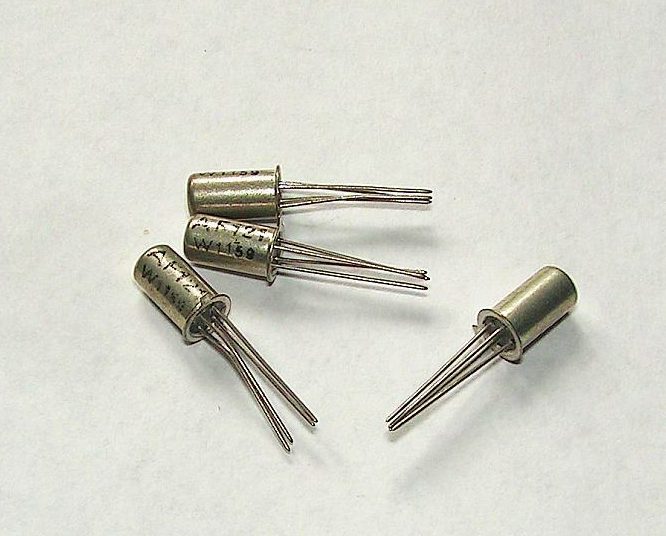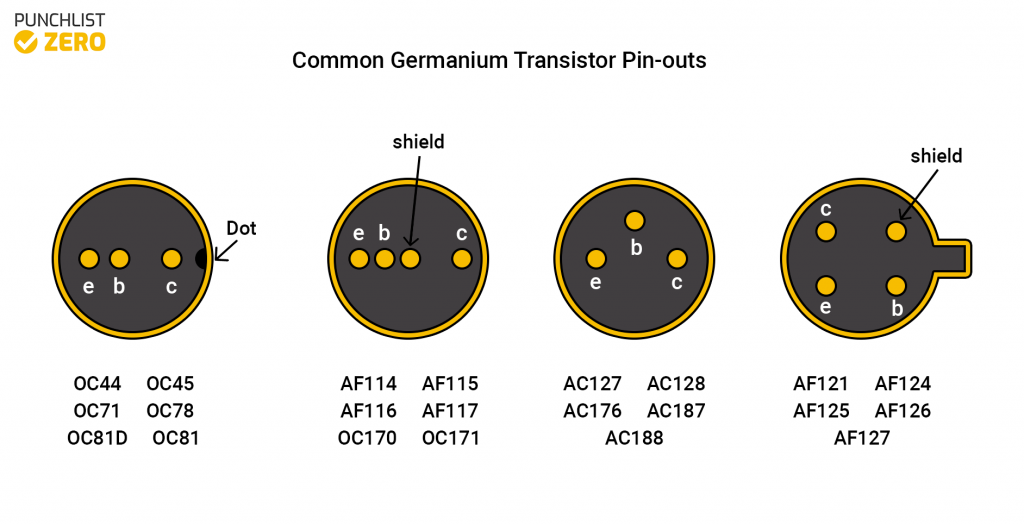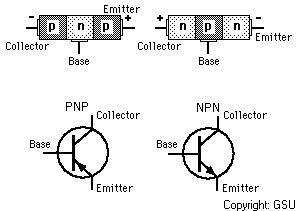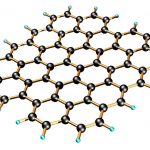As civilization grows bigger, technological developments get smaller in size. The discovery of the germanium transistor ushered in a new age of computing. Its technology would become the building blocks of modern electronics. In this article, you will learn about the history of the germanium transistor, its purpose, and pinout.
History
Germanium was discovered as a valuable semiconductor in 1886 by Clemens Winkler. It was not until after World War II that the need for high-frequency rectifiers surged the demand for higher resolution in radar receivers. This need kicked off the “semiconductor age” and the necessity for faster computing arose afterward. This led to the first successful build of a germanium transistor in 1947 at Bell Laboratories in Murray Hill, New Jersey. Physicists William Shockley, John Bardeen, and Walter Brattain had made a breakthrough. The early radios had signal detectors made with Galena (lead sulfide crystals) in the form of a fine wire. The fine wire is the “Cat’s Whisker” and is put on a germanium crystal which finds a point of contact. This inspired Shockley, Bardeen, and Brattain to use the same concept on a “point-contact” transistor where they replaced the Galena with Germanium and made the first successful transistor.
Purpose
Electronic devices were in need of a “faucet-like” valve to allow weaker signals to control a larger flow of electrons. Before the 1950s, vacuum tubes were the defacto choice to control the flow of electrons in most electronics. However, vacuum tubes were too large and often overheated to a short life span. The transistor upgraded electronics with a valve that was extremely smaller and used much less power than the vacuum tube. By 1953, high-performance germanium transistors were in use for car radios to amplify weak signals in the atmosphere.

Evolution of the Transistor
Texas Instruments saw the demand and met it with the commercial production of silicon junction transistors for portable radios in 1954. At the time, Silicon was a much more common element and also had the added benefit of corrosion protected with its thin sheath of silicon dioxide. Germanium also breaks down at 180 degrees Fahrenheit in production. It was not long until Sony, a Japanese company, acquired rights to producing transistors and started to dominate the market. In the 1960s, Sony began to manufacture television sets using transistors and made vacuum tubes obsolete.
Germanium Transistor Pin-Out

Transistors are broken down into the base, emitter, and collector sections.
The base is a gate controller device for a large electrical supply. The collector acts as a large electrical supply. The emitter is the outlet for that supply. By adjusting the current levels that flow from the base, the current from the collector becomes controllable. The transistor acts as almost a binary switch. For example, when there are less than 4 volts, the transistor will switch off. Therefore, when there are more than 4 volts, the transistor will switch on.
These transistors are junction transistors. Junction transistors have two types of semiconductors attached to them. They are arranged in alternation, such as “PNP” or “NPN.” The ‘p’ and ‘n’ denote different types of semiconductor material. The “NPN” resistor works by adjusting the electrons in the base and in turn adjusting the current in the collector. The “PNP” works the same way but adjusts the holes in the base instead of electrons, which is essentially the identical inverse of the “PNP” transistor.
Applications
The semiconductor industry has effectively replaced germanium with silicon as a cheaper, more efficient alternative. However, germanium transistors have niche value in the music industry. This is due to their ability to produce vintage-inspired tones. The germanium semiconductor offers the best method to achieve certain levels of distortion, fuzz, and overdrive characteristics. The limitations that germanium had in the electronics industry proved beneficial in the music industrial guitar pedals.
Fuzz Pedals
Germanium transistors are a key fundamental in building fuzz pedals. Fuzz pedals help achieve a special type of distortion with harmonic overtones that guitarists seek. Moreover, these pedals clip audio signals into square waves to create a massive amount of harmonic saturation. However, this diminishes the intensity of music notes. Germanium transistors are also very sensitive to temperature which allows guitarists to adjust audio tone as they please. Some guitarists actually freeze their fuzz pedals before use because it gives them more volume and better fuzz. Fuzz pedals that are made with germanium transistors also tend to lean on the amp overdrive side. This means that they are smoother and have a mid-range boost. Moreover, they are very sensitive to touch and integrate well with guitar volume knobs and tone knobs.
Legacy
Germanium transistors were a key element to burying the vacuum tube and serving as a bridge to silicon chips. Unlike 8 track tapes and Betamax, they survived obsoletion via the music industry.




